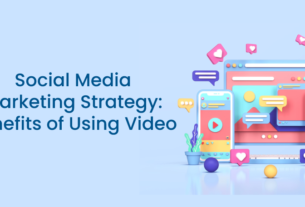[ad_1]
Lights, Camera, Action! The Essential Guide to Video Marketing for Small Businesses
In today’s digital age, video marketing has become an essential tool for businesses, big and small, to connect with their target audience and promote their products or services. With the rise of social media and video-sharing platforms like YouTube, Vimeo, and TikTok, creating and sharing videos has never been easier, making it a powerful tool for small businesses to engage their customers and increase brand awareness.
1. Why Video Marketing?
Video marketing allows small businesses to create compelling and engaging content that can effectively capture their audience’s attention. It provides an opportunity to showcase products or services in action, tell a story, or educate potential customers, all in a visually appealing format.
According to recent studies, videos have a higher engagement rate compared to other types of content. It keeps users on websites longer, increases click-through rates, and has a higher chance of being shared on various social media platforms. By incorporating videos into your marketing strategy, you can effectively communicate your brand’s message and create a lasting impression on your target audience.
2. Planning Your Video Marketing Strategy
Before diving into the world of video marketing, it’s essential to have a clear plan in place. Consider your target audience, the goals you want to achieve, and the type of videos that will resonate with your audience. Here are a few steps to help you get started:
a. Define your goals: Determine what you want your videos to achieve. Are you looking to increase brand awareness, drive traffic to your website, generate leads, or boost sales? Having a clear goal will guide your video production process.
b. Identify your target audience: Knowing your audience is crucial in creating videos that will resonate with them. Conduct market research to understand their interests, preferences, and pain points. This information will help you create content that speaks directly to them.
c. Choose the right video types: There are various types of videos you can create, such as product demos, customer testimonials, explainer videos, behind-the-scenes footage, and how-to videos. Select the ones that align with your goals and will capture your audience’s attention.
d. Create a content calendar: Plan your video releases to ensure a consistent and engaging presence. A content calendar will help you stay organized and align your videos with ongoing marketing campaigns and events.
3. Producing Compelling Videos
Once you have your strategy in place, it’s time to start creating your videos. While high-quality production can enhance the viewer’s experience, it’s not always necessary for small businesses working with limited resources. Here are some tips for creating compelling videos:
a. Keep it short and concise: Attention spans are shorter than ever, so aim for videos that are no longer than two to three minutes. Get to the point quickly and keep your messaging clear.
b. Focus on storytelling: Storytelling is a powerful tool in video marketing. Craft a narrative that engages your audience emotionally and connects them with your brand.
c. Use professional equipment when possible: While you don’t need to invest in expensive equipment, using good lighting, a quality microphone, and stable footage can make a significant difference in the overall production value.
d. Incorporate branding elements: Ensure that your videos reflect your brand’s identity by incorporating your logo, colors, and brand voice consistently.

4. Promoting Your Videos
Creating compelling videos is only half the battle; promoting them is equally important. Here are some strategies to help you get maximum exposure:
a. Optimize for SEO: Use relevant keywords and tags in your video titles, descriptions, and metadata to increase discoverability on search engines and video-sharing platforms.
b. Share on multiple platforms: Utilize social media platforms and video-sharing websites to reach a broader audience. Each platform has its unique audience and content format, so tailor your videos accordingly.
c. Collaborate with influencers: Partnering with popular influencers or industry experts can help expand your reach and credibility. Their endorsement can introduce your brand to a new audience.
d. Engage with your audience: Respond to comments, likes, and shares to foster a sense of community and encourage interaction with your brand.
5. Analyzing and Adjusting
Lastly, don’t forget to measure the success of your video marketing efforts to refine your strategy continuously. Video analytics can provide valuable insights into metrics such as views, engagement, click-through rates, and conversion rates. Use this data to determine what’s working and what needs improvement, and adjust your future videos accordingly.
Why Influencer Video Marketing is the Future of Advertising
In conclusion, video marketing offers immense potential for small businesses to connect with their target audience, increase brand visibility, and drive meaningful engagement. By planning a solid strategy, creating compelling videos, and effectively promoting them, small businesses can reap the benefits of video marketing and stay ahead in today’s digital landscape. So, lights, camera, action! Start creating captivating videos to take your small business to new heights.
[ad_2]





